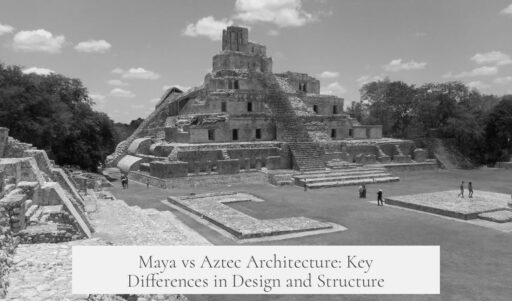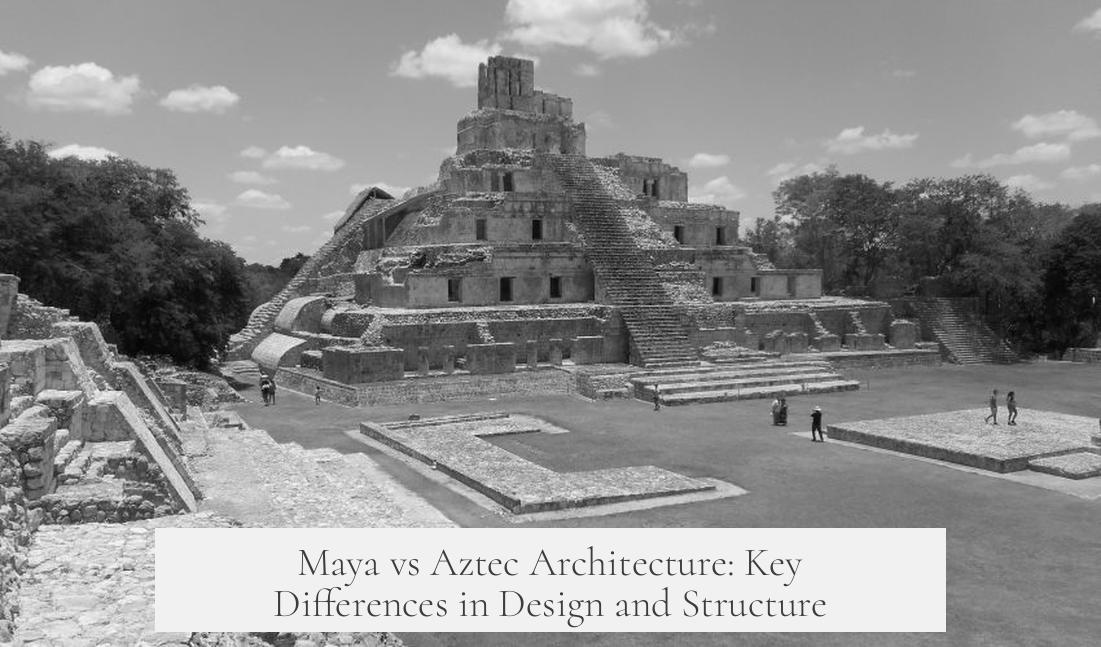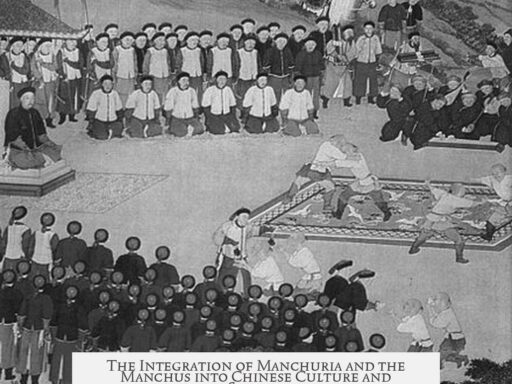The difference between Maya architecture and Aztec architecture lies in their structural styles, political influences, and urban planning characteristics. Maya architecture shows broad diversity due to its long time span and decentralized political organization, featuring unique forms like E Groups and Triadic Groups. In contrast, Aztec architecture is marked by standardized elements such as pyramids topped with double temples and highly organized marketplaces with permanent structures.
The Maya civilization spanned from around 750 BCE to 1697 CE. This extended timeline caused a variety of architectural styles across centuries. The lack of a unified political structure resulted in distinct architectural variations from site to site. For example, pyramids at Uxmal, Tikal, and Dzibilchaltun differ substantially in form and style. Such diversity reflects localized political powers rather than a centralized tradition.
Maya architects emphasized social and ceremonial roles in their designs. A key example is the “E Group,” found in southern lowland Maya cities. These complexes served primarily social functions, possibly ceremonial or elite-focused, rather than strictly astronomical purposes. E Groups often included a specific arrangement of structures thought to relate to celestial events but evolved more for communal and elite use.
Another common Maya architectural feature is the Triadic Group. This layout places a large central building flanked by two smaller buildings, positioned to form a triangle. Widespread in Maya cities, this arrangement replaced some earlier E Group complexes. Their design indicates a focus on ritual and social symbolism. Many Maya monumental buildings were built by excavating bedrock and using locally available limestone in various forms, from massive blocks to fine stucco. These structures often mimicked residential living spaces on a grander scale, reflecting social hierarchies and communal cooperation.
In contrast, Aztec architecture shows more uniformity, especially in urban centers like Tenochtitlan. Pyramids in Aztec cities regularly feature double temples set atop wide bases. The double temple design is distinctive, including structures like the Huey Teocalli in Tenochtitlan, which have no close equivalent in Maya sites. This form expresses Aztec religious practices, where two temples likely honored dual deities or ceremonial functions.
Aztec city planning included well-developed marketplaces. These markets were large, centrally located, and featured constricted access points for controlled entry and exit. The marketplaces contained permanent structures, shrines, and facilities to house itinerant merchants. Such urban features underline the highly organized, centralized nature of Aztec society.
In comparison, Maya marketplaces were less architecturally emphasized and harder to detect archaeologically. Some Maya markets had central planning and included courts, but they lacked the permanent, complex buildings found in Aztec centers. Maya marketplaces often existed in central plazas which left fewer lasting architectural traces. This difference may reflect social and economic variations or differences in market function and scale between the two civilizations.
| Feature | Maya Architecture | Aztec Architecture |
|---|---|---|
| Political Influence | Decentralized city-states; diverse styles | Centralized empire; uniform styles |
| Architectural Forms | Pyramids vary; E Groups and Triadic Groups | Pyramids with double temples |
| Construction Materials | Limestone blocks, stucco, bedrock excavation | Stone and adobe with decorative tiles |
| Marketplaces | Less permanent, in central plazas | Large, well-planned with permanent structures |
| Religious Centers | Social and ceremonial, varying by site | Centralized, prominent double-temple pyramids |
These distinctions reflect broader differences in political structure, urban organization, and cultural priorities. The Maya built over millennia with adaptive traditions shaped by local rulers. The Aztecs constructed more standardized temples and marketplaces that supported a centralized imperial system.
- Maya architecture varies widely due to decentralized political power and long chronology.
- Maya sites feature E Groups and Triadic Groups, emphasizing social and ceremonial roles.
- Aztec temples often have double temples, unlike Maya pyramids.
- Aztec marketplaces are large, permanent, and structured, while Maya markets are less architecturally apparent.
- Material use differs, with Maya favoring limestone and bedrock excavation, while Aztecs used stone and adobe in distinctive forms.




